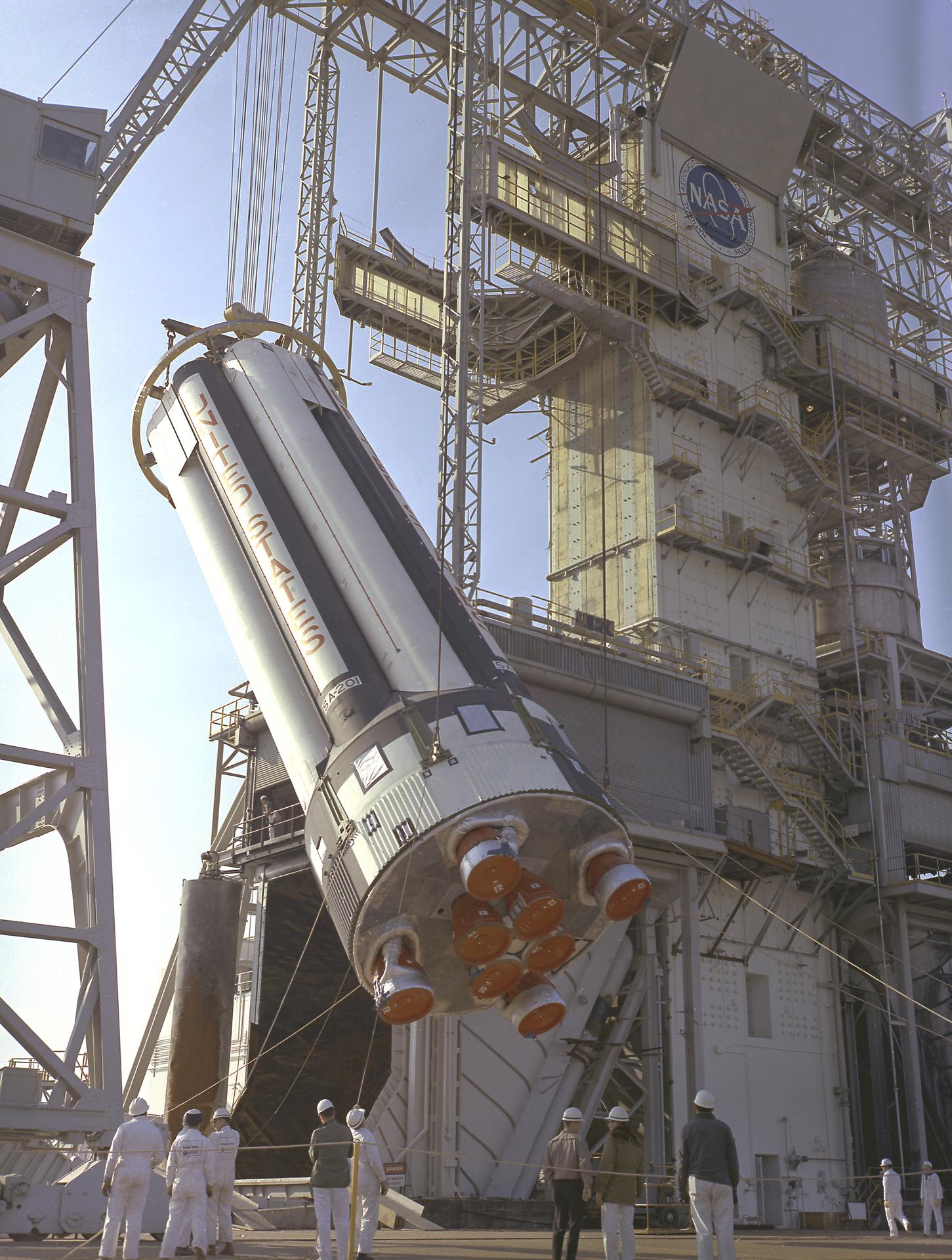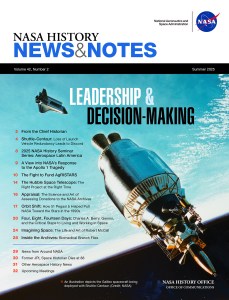The Aloha State contributed to the success of many NASA programs, since the earliest days of the space agency and continues with future exploration endeavors. Hawaii’s contributions are vast. The state housed a tracking station for early human space flights, served as the first port of call for astronauts returning from the Moon, provided sites for geology training for Apollo astronauts, and landscapes that mimic the surface of Mars. Finally, articles of Hawaiian culture flew aboard several NASA human spaceflight missions.
To maintain regular communications with the first orbiting astronauts in Project Mercury, NASA established the global Spacecraft Tracking and Data Network, a series of tracking stations around the world, managed by the Goddard Space Flight Center in Greenbelt, Maryland. Hawaii’s strategic location in the middle of the Pacific Ocean made it a natural for one the stations. The station situated in Kōkee State Park on the Garden Isle of Kauai became operational in June 1961 and supported Project Mercury through May 1963. The station was re-configured to support the Gemini Program from April 1964 to November 1966 and again to support Apollo flights. Stationed on Kauai during the Gemini 3 mission in 1965 as capsule communicator (CAPCOM), future first human on the Moon Neil Armstrong was in an ideal position to help the crew through their reentry preparations. In 1989, with the advent of the Tracking and Data Relay Satellite System to support human space flights, the Kauai tracking station was no longer needed in that role but today supports the NASA Goddard Crustal Dynamics Project and the US Naval Observatory and has been renamed the Kōkee Park Geophysical Observatory.
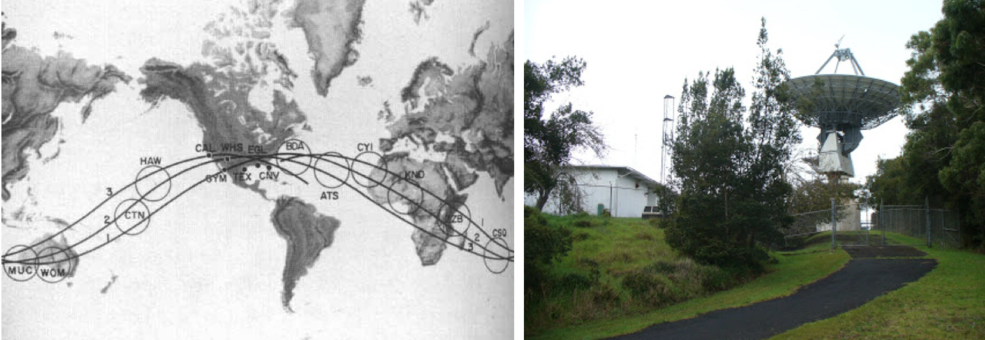
Map of NASA’s tracking stations to support Project Mercury; HAW marks the location of the Kauai tracking station (left). The Kauai tracking station today as the Kōkee Park Geophysical Observatory (right).
As home to the U.S. Navy’s Pacific Fleet, Pearl Harbor west of Honolulu on the island of Oahu became a focal point for the recovery of Apollo missions returning from the Moon. Recovery ships sailed from Pearl Harbor to meet the returning capsules, and take the crewmembers to their first port of call in Honolulu. For the first three Moon landing missions, returning astronauts were quarantined immediately after splashdown in a Mobile Quarantine Facility (MQF) aboard the prime recovery ship as it sailed back to Pearl Harbor. There, the MQF with the crew inside would be taken off the ship, transported by land to Hickam Air Force Base and placed aboard a C-141 aircraft for the flight back to Houston. John Hirasaki, a NASA recovery engineer who was with the Apollo 11 crew inside the MQF, recounted to the Honolulu Advertiser the events of the day they arrived in Hawaii: “There were an awful lot of people on the route between where they offloaded us from the [recovery ship USS] Hornet and transported us to Hickam. And the astronauts were amazed by the reception of the public.” A full account of Hirasaki’s experience during the return of the Apollo 11 astronauts and their subsequent quarantine in Houston can be found by reading his oral history with the JSC History Office. Beginning with Apollo 15, NASA eliminated the need for quarantine and the crews greeted public officials and well-wishers face to face, without the barrier of the MQF.
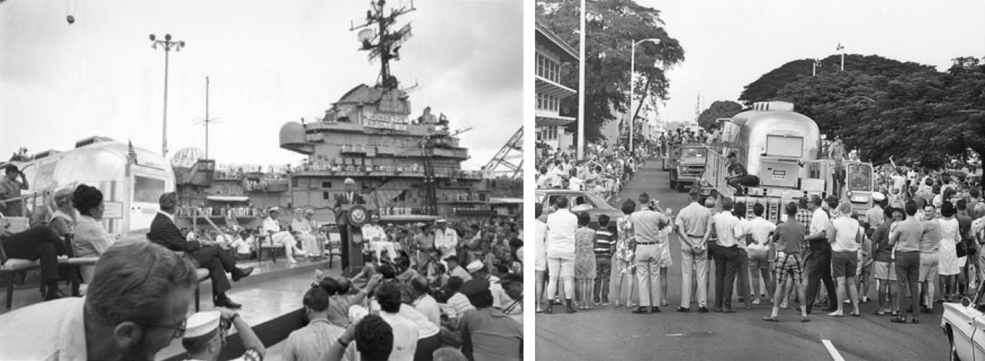
Hawaii Gov. John Burns greets Apollo 11 crew in the MQF during ceremonies at Pearl Harbor on July 27, 1969 (left). Crowds gathered to watch the Apollo 11 astronauts in their mobile quarantine facility on the move from Pearl Harbor to Hickam Air Force Base after being transferred from the deck of the carrier USS Hornet (right).
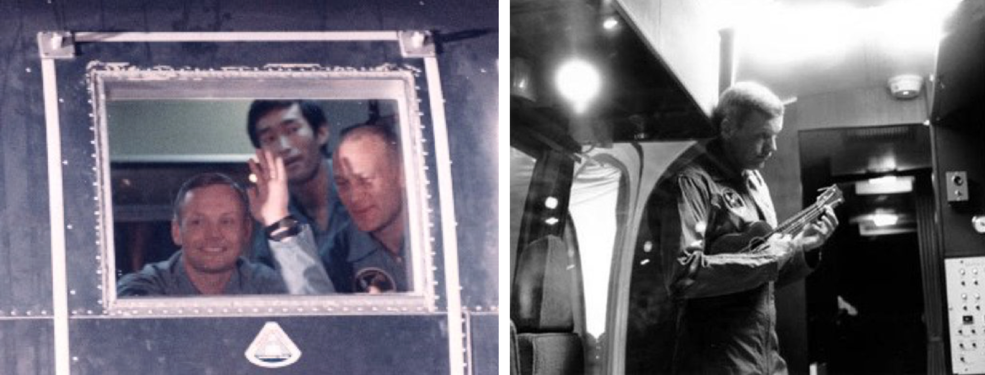
NASA recovery team engineer John Hirasaki behind recently-returned Apollo 11 moonwalkers Neil Armstrong and Buzz Aldrin in the MQF (left). Apollo 11 astronaut Neil Armstrong strumming a ukulele inside the MQF after returning from the Moon (right).
Having met President John F. Kennedy’s goal of landing a man on the Moon and returning him safely to the Earth, NASA turned to conducting more science on the Moon, especially in the field of lunar geology. To give future Moon-walking astronauts more familiarity with the subject, several locations were identified for geology training. The volcanic terrain at several sites on the Big Island were ideal for training Apollo astronauts. To recognize Hawaii’s contributions to the Apollo program, the State Senate passed a resolution to declare July 20, 2014, the 45th anniversary of the lunar landing, Tranquility Base Day, after the Apollo 11 landing site in the Moon’s Sea of Tranquility.
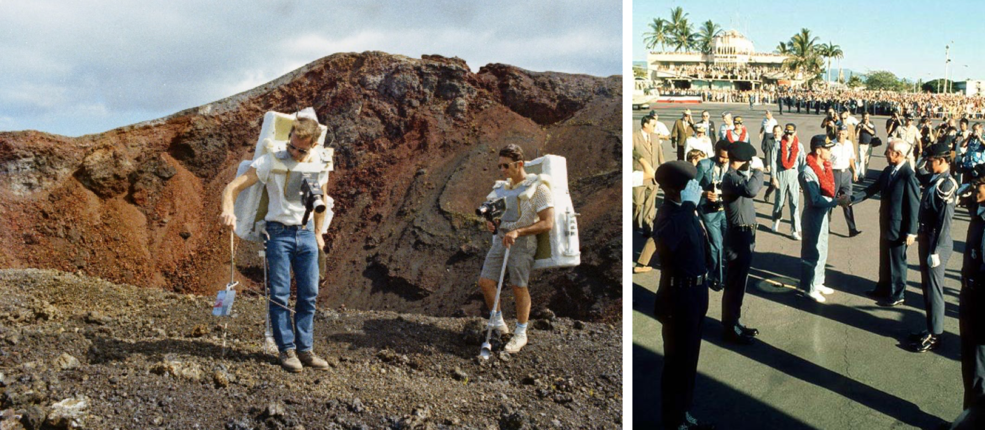
Apollo 15 astronauts Dave Scott and Jim Irwin train for their lunar explorations in 1970 at a lava flow dubbed the “Apollo Valley” on the Big Island (left). Hawaii Gov. John Burns says farewell to the Apollo 15 crew after their return from the Moon in 1971, as they board a C-141 jet at Hickam AFB for their flight back to Houston (right). Image courtesy of Edward Nevels.
As part of an educational activity on board the International Space Station (ISS), NASA arranged with the Bernice Pauahi Bishop Museum in Honolulu to fly a pair of pu’ili sticks, a Hawaiian percussion musical instrument made of bamboo and used in traditional dances, and include them in a demonstration of various musical instruments and sounds in space. In 2003, ISS Expedition 7 science officer astronaut Ed Lu carried out demonstrations of the pu’ili during his 6-month mission, wearing his best Aloha shirt for the occasion – Aloha shirts being popular among astronauts in general. And while Armstrong strummed his ukulele after his return from the Moon, astronauts today can partake of that pleasure at any time. In 2012, Japan Aerospace Exploration Agency astronaut Akihiko Hoshide brought a Hilo soprano ukulele to the ISS with him, and it remains on board to this day for all residents to enjoy.

Crew of STS-26 sporting Aloha shirts for their in-flight crew photo in 1988 (left). Expedition 7 Science Office Ed Lu, wearing his best Aloha shirt, demonstrates pu’ili sticks for an educational activity aboard ISS in 2003 (middle). Expedition 34 Commander Kevin Ford strums a Hilo soprano ukulele on ISS in 2012 (right).
The Big Island’s lava fields continue to support space-related activities. On the Kilauea volcano, a team of researchers from NASA Headquarters, six NASA field centers and several partner institutions comprising the Biologic Analog Science Associated with Lava Terrains (BASALT) project, have been studying the biology and geology of this terrain while simulating a realistic mission on the surface of Mars. One goal of the BASALT project is to develop rules and protocols that could be used during an actual Mars mission to identify and protect geologic samples that potentially contain biologic specimens.
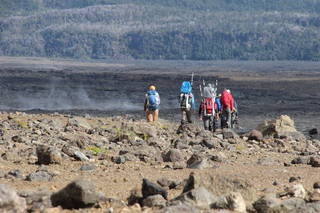
A team of BASALT project researchers on Kilauea volcano in 2017 (right).
Hawaii is important to NASA’s past, present and future space exploration programs. The state was instrumental in achieving President John F. Kennedy’s goal of landing a man on the Moon and is now contributing to NASA’s efforts to explore worlds beyond our own.
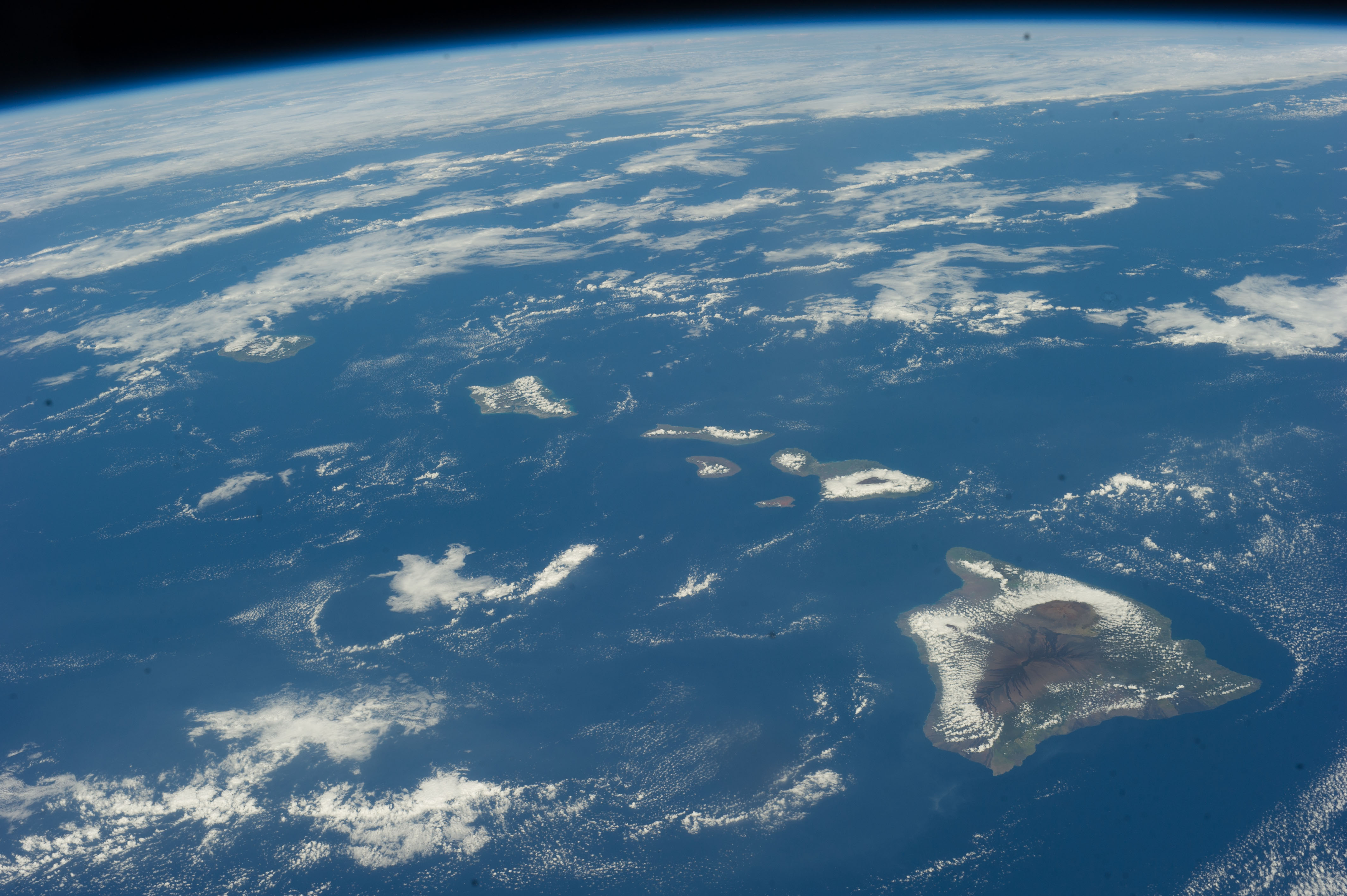
Hawaii as seen from ISS during Expedition 38 in 2014.























